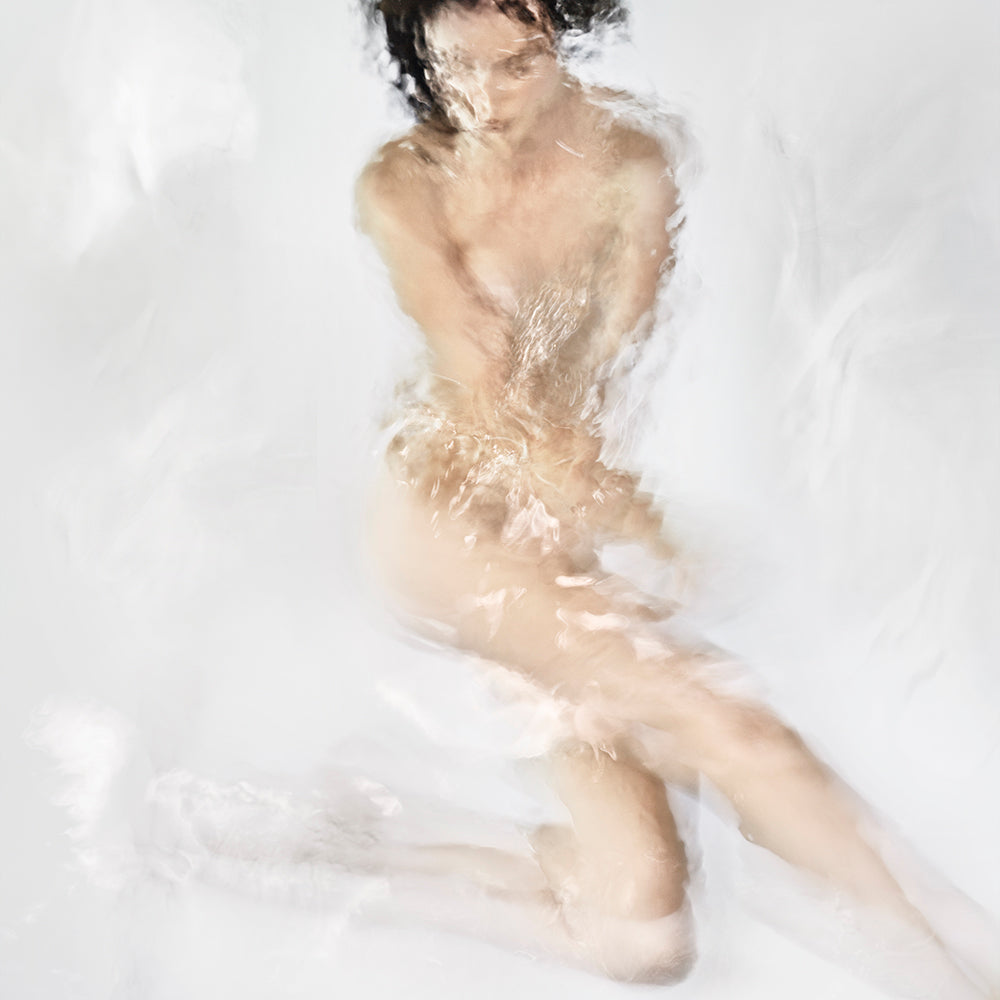Artist Q & A: Vicky Christou

1) What intangible or immaterial moments are you most interested in representing through your work?
I am interested in painting a visual and materially formed record of time. This record of time is created by way of a visual methodology of paint application and reactive decision making.
Meditation and contemplation are part of my toolkit. I seek to evoke an internal state where a passage of time is experienced, and physically recorded by a calendar of sorts - the grid created by painted layered impasto lines.
I like the analogy of duplicity and what it reveals: what we first see and know, and what light and shade reveal to us from different vantage points and at different times. I find that transitory passage inspiring and poetic, like watching the day`s light fade into evening. Those are the moments that I want to integrate into my work.
2) What kind of material properties have you observed through the act of painting? How does colour or your perception of colour change as you apply paint layer upon layer?
The invisible painting layer is the shadow cast by light reflecting off the depth and accumulation of paint. This is often more apparent in the white grid paintings but the coloured grids also have a directional quality and optical play between the colored impasto lines which have a similar intent.
Within the White Shade grids, the relationship between the form and shadow is depicted in a subtle way. There is often two works in simultaneous production, one at times invisible.
3) Your work uncovers the fundamental properties of paint and is often read as drawing, painting and sculpture all in one. Do you see it this way? Do you consider it more like one than the other(s)?
This current body of work has become bas-relief sculptures made by accumulated lines drawn with paint. Paint, and its properties as a medium, historical references and traditions from different cultures inspire me as do handiwork and textiles. I consider myself a painter who is exploring the visual vocabulary of painting within in a personal experiential framework.
4) Your work appears to be very process-driven. Could you lend a little insight into your process? How does chance play a role in your work, if at all?
The grid for me is a point of departure. I like its simplicity and perfection when I begin, but it`s the curious imperfection of my mark-making that moves me forward. Each painting is, although often only subtly different, solved by a visual and emotive reaction unique to each piece.
5) You have spoken of the many skilled artisans in your life, most of whom are women who have worked in textile (knitting, weaving, sewing, embroidering) who have inspired you and your work through the years. What role does craft, and/or these women play in your work?
Generations of women in my family have been skilled in these traditions. Often out of necessity, they sewed and wove their cloths and linens.
There's always been a skilled beauty to their designs which I've long admired. At first I did not even notice how it was influencing me and my work. I was always consciously making and seeing patterns in nature and in architecture. I think the dedication and pride of their skilled production was imprinted on me at a young age.
I have never acknowledged the elitist distinction between so-called “women’s work” and high art. Content and intention of the craft form is what makes it art. I like how both traditions have a voice in my work and together create an equilibrium – I appreciate them both.
6) Looking at your work, one is reminded of the minimalist artist Agnes Martin whose work also had a lot to do with line and repetition. Your work, like Martin’s, demands intimate viewing and quiet contemplation. Martin has remarked about her work: “My paintings are about merging, about formlessness ... A world without objects, without interruption.” Does this statement resonate with you? If so, how?
Agnes Martin’s work resonates with me in the same way Mondrian does. When you see how both artists have abstracted reality down to an elemental purity such as line, it’s really quite incredible. Finding the inner bones, the essence of an object was both their intent and their spiritual experience. I have a lot to learn from these artists as they continue to inspire me.













































